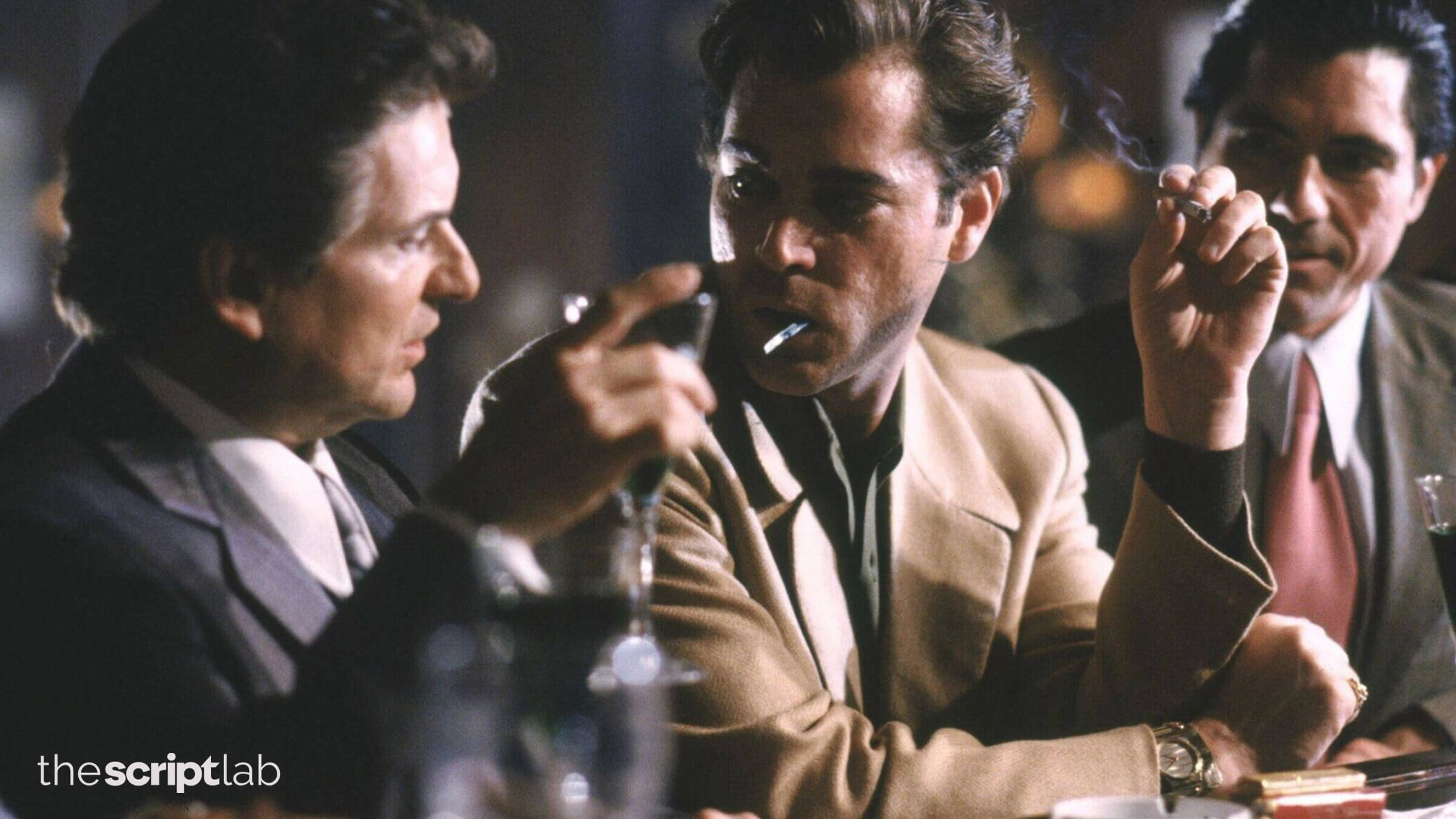By David Young · September 12, 2022

If you’re a fan of gangster movies, true crime, snappy dialogue, and absolutely unbearable tension, you’ve likely devoured Martin Scorsese films like they were drenched in Mama Scorsese’s famous meat sauce.
Hailed as one of the great auteur directors of the Hollywood Renaissance, Scorsese is a director with a very clear voice. His work continues to illuminate the darkest corners of crime, violence, and greed even today, revealing these often unseen worlds in brutal realness. In fact, things sometimes get a little too real in his stories, and audiences begin to realize that there is a very human layer to the real-life madness being showcased.
Through casual “dinner table scenes,” narration, and various fourth wall breaking techniques, Scorsese manages to show how dark and violent his stories can get — a reflection of how dark and violent the world actually is. Let’s take a look at a few Martin Scorsese films and how they capture our attention.
Scripts from this Article
Say these two words to anyone who’s read or watched GoodFellas, and they’ll have a traumatic flashback: “Funny how?” The way a stomach must drop when someone is being grilled by a mafioso can’t be understated — and that’s not even the strongest indication of how unhinged Tommy (Joe Pesci) gets to be later on.
This scene is emblematic of something omnipresent in the film: GoodFellas showcases the dangers of proximity with the Families. Even on “good terms,” violence and the fear of it pervade the lifestyle, as we see it culminate multiple times into full-on violence during the story. The careful use of narration guides us to understand the long-standing relationships between some of the characters — and it sets up what happens when that all goes bad.
Download the script!Something that can’t be ignored is the way that violence is used to capture the climate of a certain era. This is done with utmost precision in The Wolf of Wall Street, where Scorsese’s goal as a director was to paint the devastation, desperation, and debauchery that ensued from Jordan Belfort’s true meteoric rise to criminal heights in the wake of Black Monday.
Martin Scorsese’s depictions of violence here include domestic abuse and beating someone senseless before hanging them off a balcony — alongside some slurs that showcase the insensitivity of the age. You can hear that senselessness and insensitivity in the narration, too, as it pairs perfectly with the casual attitudes of Belfort and his associates after the fact.
Download the script!One movie in which the narration seems to take over almost completely is Casino, where much of the voiceover brings to light how the casinos in Las Vegas found their way into the hands of Chicago’s organized crime syndicates. The film is based on true events, even the murders and the car bombing, and the verisimilitude of these events is captured onscreen to great effect.
Scorsese’s trademark narration device gets implemented in this script quite prominently. Still, he wrote it in a way that truly completes the narrative with detailed fervor, a love for history, and a small sense of hindsight that feels perfect for the film.
Download the script!This story steps outside the usual bounds of gangs and New York City for something that Scorsese explored elsewhere: the Edo period in Japan. The story has a lot of similar themes, though: Clandestine dealings, though dealings of faith, stand in the face of a government body — much like the usual tales of Mafiosi that Martin Scorsese is so well-known for.
It’s this driving struggle of faith for Jesuit missionaries and their Japanese counterparts that leads to violent encounters like the torture endured by the hidden Christian population when discovered by officials. Scorsese also uses two separate narrators to indicate a very clear (and pivotal) shift in the narrative.
Download the script!This film tackles a story of intrigue involving the 1950s Mafia and some powerful players like Jimmy Hoffa, a figure of great importance in the unionized labor movement. The story is told through the eyes of Robert De Niro’s character, Frank Sheeran, as he intimately shares all he knows about the events in a way that seems to beseech the attention of the audience directly.
Sheeran, presently in a nursing home, relives his days as a contract killer, and the subject matter lends itself to a clear and deeply introspective view. Violence isn’t a byproduct in this movie, but it’s actually the goal of the story, as it gives perspective to a crime that’s yet to be solved in real life. Still, the omnipresence of violence is an important thing to note, and the way Sheeran shares his story counts in all respects as another use of Scorsese’s usual voice.
Download the script!It’ll do your soul some good to take a gander at Scorsese’s other top films, like Taxi Driver and The Departed, as well as Scorsese’s Mean Streets script. They definitely also use the trademarks we’ve gone over here.
But no matter what he uses, Scorsese is a director whose imprint on American film has been felt through his contributions onscreen and on the page. If you’re looking to learn from a director with one of the most well-recognized voices in cinema, you’d do well to start learning from the films of Martin Scorsese, no question!